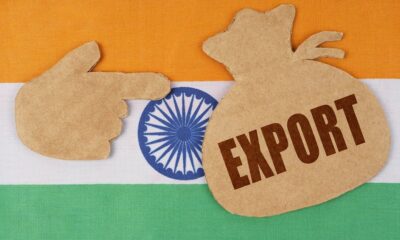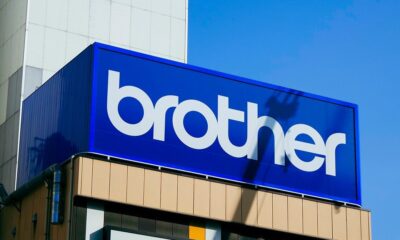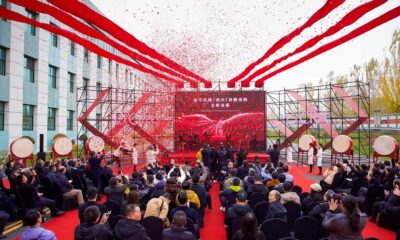Fashion
India’s MMF segment set for growth after polyester QCO rollback: CITI

The Confederation of Indian Textile Industry (CITI) heartily welcomes the rescinding of the Quality Control Orders (QCOs) on Polyester Fibre and Polyester Yarn, as this pro-growth measure will hugely benefit the country’s textile and apparel sector.
The Confederation of Indian Textile Industry (CITI) has hailed the rescinding of QCOs on polyester fibre and yarn as a major pro-growth move.
This addresses a long-standing demand, easing raw material access at international prices and boosting the MMF segment.
CITI requested similar relief for viscose fibre to help India achieve its $350 billion textile industry goal by 2030.
“The rescinding of the Quality Control Orders (QCOs) on Polyester Fibre and Polyester Yarn comes as a great relief, as it has been a long-awaited demand of all the user industries,” CITI chairman Ashwin Chandran said in a release.
“Polyester fibre and polyester yarn form most of the man-made fibre (MMF) products, and hence, this measure by the authorities will contribute to the growth of the MMF segment in India,” Chandran added.
Chandran said the removal of these QCOs will improve the cost competitiveness of Indian textile and apparel products by making it easier to obtain raw materials at internationally competitive prices. “Coupled with the Export Package announced on November 12, the rescinding of these QCOs will act as a huge confidence-booster for the textile and apparel sector,” the CITI chairman pointed out.
Although the global textile and apparel arena is dominated by MMF, it is the other way around in India, where cotton dominates.
Chandran said that given the government’s steadfast commitment to the growth of the textile and apparel sector, it could be helpful if authorities could also consider providing similar relief on the QCO front for viscose fibre and other cellulosic raw materials.
India aims to create $350 billion textile and apparel industry by 2030, with exports contributing $100 billion.
Fibre2Fashion News Desk (HU)
Fashion
Sri Lanka targets lower debt ratio with new budget: Fitch

The recently presented budget projected a fiscal deficit of 5.1 per cent of GDP in 2026—higher than the 4.5 per cent expected in 2025 but well below the originally budgeted 6.7 per cent for 2025. The IMF later revised the 2025 deficit projection to 5.4 per cent. The primary surplus is estimated at 2.5 per cent of GDP in 2026, down from 3.8 per cent expected in 2025 but still above the 2.3 per cent target under Sri Lanka’s IMF programme. The government aims to narrow the deficit to 3.8 per cent of GDP by 2030.
Fitch noted that while the 2026 deficit estimate is wider than its own forecast of 4.6 per cent, the effect on debt dynamics could be mitigated by the stronger-than-expected 2025 performance, when the agency anticipated a 5.4 per cent deficit and a 2.4 per cent primary surplus. Staying aligned with IMF fiscal benchmarks would strengthen policymaking credibility and reinforce macroeconomic stability.
Sri Lanka’s new budget reinforces its focus on fiscal consolidation, targeting a 5.1 per cent deficit in 2026 and maintaining a primary surplus above IMF requirement.
Fitch said stronger-than-expected 2025 results may offset a wider 2026 gap.
Revenue/GDP is set to ease slightly.
Growth-supportive measures continue, but high debt and post-2027 obligations remain key concerns.
Government revenue/GDP is expected to ease to 15.4 per cent in 2026 from 15.9 per cent in 2025, still slightly above Fitch’s 2026 projection. A failure to keep tax revenue growth broadly in line with GDP growth could add pressure to Sri Lanka’s credit profile.
The budget assumes a 1.2 per cent fall in trade taxes after this year’s surge in vehicle imports, while goods and services taxes are projected to rise 3.5 per cent and income taxes 8 per cent. Fitch described the goods and services tax estimate as conservative, given expected nominal GDP growth of over 7 per cent and new tax-enhancing measures such as a lower VAT registration threshold and strengthened auditing.
Unexpectedly strong import growth could further boost revenue but also strain external balances. The 2025 fiscal overperformance was partly driven by underspending, with public investment reaching only 3.2 per cent of GDP compared with the planned 4 per cent. Persistent shortfalls in capital spending could hinder long-term growth and complicate fiscal consolidation.
Even so, the budget outlines several growth-supportive initiatives, including the revival of Colombo airport’s expansion, a LKR 342 billion (~$1.13 billion) allocation for road development, tax incentives for digital infrastructure, and planned legislation to expand public-private partnerships in infrastructure.
Fitch expects gross general government debt/GDP to decline from 100.5 per cent in 2024 to around 96 per cent in 2027—still well above the median 74 per cent for ‘CCC’ rated sovereigns. The end of the IMF programme in 2027 and higher debt-servicing obligations from 2028 pose additional medium-term risks.
Fibre2Fashion News Desk (SG)
Fashion
Saint Laurent tops Lyst Index; Skims, Coach, Ralph Lauren boost reach

Saint Laurent’s Le Loafer shoe was Q3’s second hottest product.
Saint Laurent ranked top for the first time in the Lyst Index in Q3 2025, followed by Italy’s Miu Miu and London-based H&M Group brand COS.
Saint Laurent’s Le Loafer shoe was Q3’s second hottest product.
Moving up four positions, COS saw a 147-per cent increase in searches in the quarter.
Loewe moved down six spaces to eighth rank.
American brand The Row moved up two spaces into fourth position.
The latest index reflects an unusual mix of moods, uncertainty for brands mid-transition and clarity for those doubling down on what they do best, according to an official release.
All but three brands in the table moved position this quarter, with the biggest swings coming from COS’s breakthrough into the top three—moving up four places since Q2 2025, and Spanish brand Loewe moving down six spaces to eighth position.
The data shows simplicity and restraint continue to resonate with consumers seeking understated pieces across price points.
COS saw a 147-per cent increase in searches in the quarter. The COS chunky cashmere sweater, last appearing in Q4 2024, returned as one of Q3’s hottest items.
American brand The Row moved up two spaces into fourth position, with demand up by 28 per cent in the quarter. In Q2, its flip-flop defined a summer trend; this quarter, the Eel loafer dominated searches, sitting neatly in an aesthetic dialogue with Saint Laurent’s own.
Still in fifth position, demand for Coach on Lyst rose by 29 per cent in the quarter, with strong social buzz supported by high profile sports ambassadors and strategic product placements and partnerships. The Empire bag, this quarter’s tenth hottest product, helped anchor the brand’s summer success.
Another American brand seeing digital, culture-led growth is Ralph Lauren (ninth position), rising two places with a 6-per cent quarterly increase in searches.
American brands are resonating outside of the Top 20 too. Madewell saw 34-per cent growth in the quarter, riding the wave of the mall-brand renaissance bringing brands like Gap and American Eagle back into the online conversation for younger shoppers.
Brands are effectively capitalising on moments of social media virality and tapping talent more relevant to Gen Z to reach these audiences in their digitally native context.
Burberry (13th position) climbed four positions with a 14-per cent lift in demand in the quarter. Skims (15th position) continues its product-driven ascent, with demand now up by 271 per cent year on year in the quarter.
Stone Island re-entered the index after four years outside the Top 20, with a strong 115-per cent quarter-on-quarter rise in demand. A long-time pillar of casual subculture, the brand garnered mainstream attention in the quarter.
Taken together, Q3’s results reveal a fashion landscape regaining balance after several volatile seasons. New creative leads are still settling, but those with a defined direction, like Saint Laurent, The Row, and COS, are proving that conviction is the key to clarity, the release added.
Fibre2Fashion News Desk (DS)
Fashion
India’s Pearl Global Industries Ltd’s revenue rises 12.7% in H1 FY26
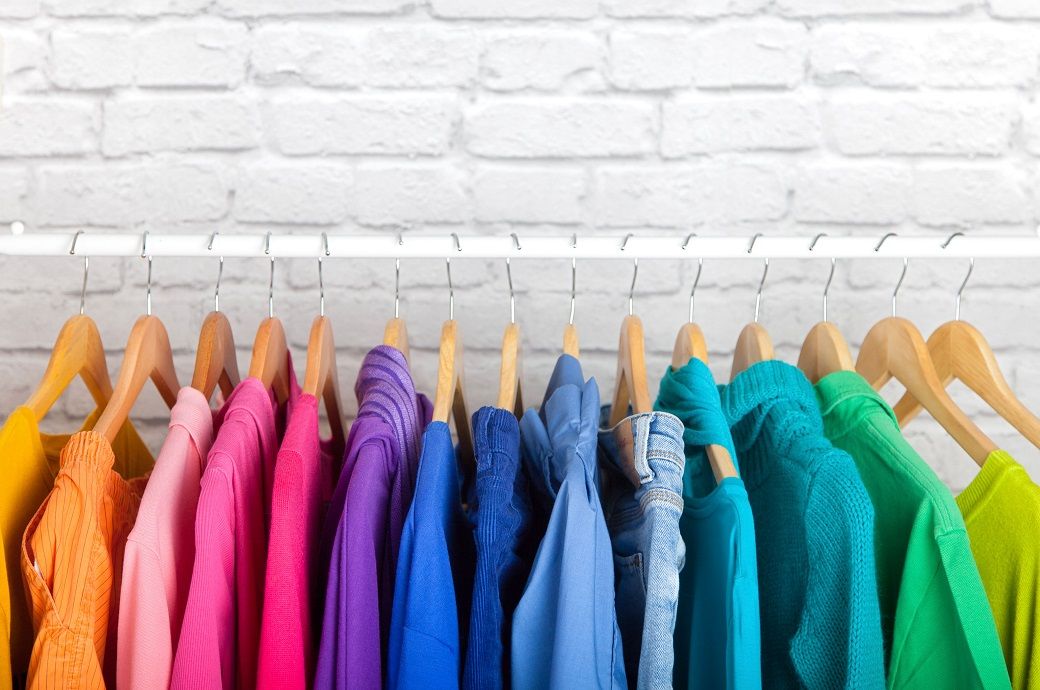
PGIL revenue was driven by high value-added product sales in Vietnam and Indonesia. Adjusted EBITDA stood at ₹236 crore (~$26.6 million), marking 18.4 per cent YoY growth, with margins improving to 9.3 per cent. Excluding tariff costs of around ₹21 crore and initial losses at new facilities in Guatemala and Bihar, the margin stood higher at 10.6 per cent. The profit after tax (PAT) rose to ₹138 crore (~$15.6 million), a 17 per cent YoY increase.
Pearl Global Industries Limited has reported strong performance in H1 FY26, with revenue rising 12.7 per cent YoY to ₹2,541 crore (~$286.9 million), driven by high-value product sales from Vietnam and Indonesia.
Adjusted EBITDA grew 18.4 per cent to ₹236 crore (~$26.6 million), while PAT rose 17 per cent.
The company achieved record shipments, declared dividends, and advanced sustainability initiatives.
Standalone revenue stood at ₹531 crore (~$59.9 million) for H1 FY26, while adjusted EBITDA surged 72.7 per cent YoY to ₹30 crore (~$3.4 million), translating to a 5.7 per cent margin. PAT rose to ₹41 crore (~$4.6 million), up from ₹27 crore in H1 FY25.
For Q2 FY26, PGIL reported revenue of ₹1,313 crore (~$148.3 million), up 9.2 per cent YoY. Adjusted EBITDA (excluding ESOP expenses) reached ₹122 crore (~$13.8 million), a 23.6 per cent increase, with margins improving 108 basis points (bps) to 9.3 per cent. PAT climbed 29.4 per cent YoY to ₹72 crore (~$8.1 million).
Standalone revenue for Q2 FY26 stood at ₹264 crore (~$29.8 million), while adjusted EBITDA reached ₹11 crore (~$1.2 million), reflecting a margin of 4 per cent. Profit after tax (PAT) rose to ₹15 crore (~$1.7 million), compared to ₹12 crore in the same quarter of the previous fiscal.
As of September 30, 2025, PGIL’s net worth increased to ₹1,271 crore (~$143.5 million) from ₹1,146 crore in March 2025. The company’s cash and bank balance (excluding LC payments) stood at ₹416 crore (~$47 million), with an additional ₹128 crore (~$14.4 million) in mutual funds. Working capital days were maintained at 33, and return on capital employed (ROCE) improved by 375 basis points to 29 per cent.
PGIL shipped 19.9 million pieces in Q2 FY26, its highest ever for a second quarter. The board declared an interim dividend of ₹6 per equity share, representing a 20 per cent payout ratio and 120 per cent of face value. Additionally, PGIL received ₹32 crore (~$3.6 million) in dividends from subsidiaries in Bangladesh and Hong Kong.
The company also upgraded to eFlow Nanobubble technology in Bangladesh, enabling up to 32 per cent water savings, a 9 per cent reduction in power use, and 20 per cent higher time efficiency.
“We are delighted to report another quarter of encouraging performance in Q2 FY26 despite uncertain and volatile geo-political and macro environment. Consolidated revenue for H1 FY26 crossed ₹2,500 crore milestone, reaching ₹2,541 crore, a growth of 12.7 per cent YoY. This marks a significant achievement underscoring the strength of our diversified, multi-country manufacturing model. Reflecting our continued commitment to shareholder value, the board has declared an interim dividend of ₹6 per equity share, representing a 20 per cent payout ratio (wrt Group PAT) and 120 per cent of face value of share,” said Pulkit Seth, vice-chairman and non-executive director at Pearl Global Industries.
“Our growth this quarter was led by sustained momentum in Vietnam and Indonesia, which delivered double-digit volume expansion and maintained strong operational performance. These hubs continue to validate our strategic foresight in building multi-hub production capabilities that balance scale with agility,” added Seth. “As we close the first half of FY26 on a strong footing, our focus remains on sustainable, profitable growth, anchored in agility, technology, and long-term stakeholder value creation.”
“We are pleased to share another quarter of strong financial performance, reflecting the resilience of our operations amid an evolving trade environment. In Q2FY26, Pearl Global achieved revenue of ₹1,313 crore and improved profitability, demonstrating our ability to navigate trade complexities, including 50 per cent US tariff on India. Adjusted EBITDA (excluding ESOP costs) of ₹122 crore, with margins at 9.3 per cent, improve by 108 BPS YoY. Excluding tariff cost/loss at new facilities (Guatemala & Bihar) stands at 10.1 per cent, driven by improved product mix and higher realisation from Vietnam and Indonesia,” said Pallab Banerjee, managing director, Pearl Global Industries.
“We continue to invest in India and Bangladesh and execute our capex plan of ₹250 crore (~$28.2 million) for capacity expansion, sustainability, and efficiency improvement. Expansion of 5-6 million pieces in Bangladesh, 2.5-3.5 million pieces in India, and digitisation of our supply chain are enhancing transparency, agility, and scalability across operations,” added Banerjee.
Fibre2Fashion News Desk (SG)
-

 Entertainment6 days ago
Entertainment6 days agoChina unveils£5.4 bn Fujian, its most advanced aircraft carrier yet
-

 Business1 week ago
Business1 week agoGST rationalisation impact: Higher RBI dividend expected to offset revenue shortfall; CareEdge flags tax pressure – The Times of India
-
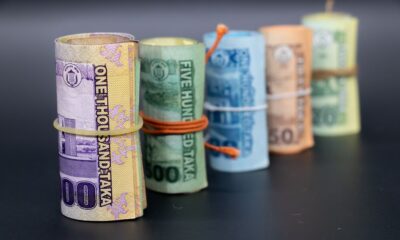
 Fashion1 week ago
Fashion1 week agoBangladesh Bank allows foreign currency-taka swap facility for dealers
-

 Business1 week ago
Business1 week agoSetback for expatriates? Delhi HC upholds mandatory EPFO membership; what this means for foreign staff – The Times of India
-

 Tech1 week ago
Tech1 week agoZohran Mamdani Just Inherited the NYPD Surveillance State
-

 Tech1 week ago
Tech1 week agoThe AI Data Center Boom Is Warping the US Economy
-

 Politics1 week ago
Politics1 week agoTrump links Republicans’ election setbacks to record US govt shutdown
-

 Politics6 days ago
Politics6 days agoIDF lawyers warned of possible Gaza war crimes: US intel findings






